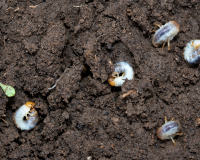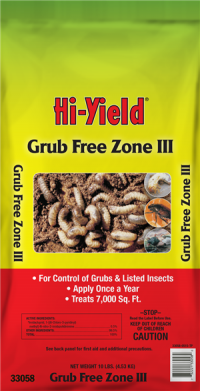Grub Control
Grub Control
Lawn Grubs
For those of us who like that perfect and lush green lawn we have a common enemy… GRUBS!
Grubs are the larvae stage of a group of insects. The grub that are most common in East Idaho are the larvae from the Billbugs. The adult’s lay their eggs in late spring on grass stems. They hatch about two weeks later where they will move from the crown of the grass stem into the top layer of soil and roots of the grass. Note: Some species of billbugs including the Denver Billbug may lay their eggs over a longer period and may overwinter in the soil.
Most of the severe damage will start to appear in late June and July. Symptoms will include patches of lawn that look like they are not getting enough water (even though they are getting ample irrigation.) These tan spots are a sign that grubs may be eating the roots of your lawn preventing the grass from using the water that may already be present in the soil.
may be eating the roots of your lawn preventing the grass from using the water that may already be present in the soil.
To confirm the presence of grubs, perform the “tug test”. Grasp the affected turf and pull upward. If the blades of grass break easily at ground level and the stems are hollowed out or are full of packed sawdust-like material, billbugs are most likely present. You may also be likely to spot the actual grub beneath the grass.
To help minimize the damage of billbugs it’s important to keep your lawn fertilized, mow frequently, and water it heavy but less frequently to encourage deep root growth.

We recommend that if your lawn has had been previously damaged by grubs in years past, that you apply Hi-Yield Grub Free Zone in mid to late May. Billbugs are hard to control so a second application towards the first of July may be necessary.
For the best results with Grub Free Zone, apply ½′′ of water 48 hours before applying to bring larvae closer to the soil surface. Mow the lawn short and immediately water after you apply it so it will work itself down to the soil.
Hi-Yield is a “systemic” insecticide that is absorbed by the roots, protecting them from being eaten. A 10lb bag will cover 8,300 sq ft.



